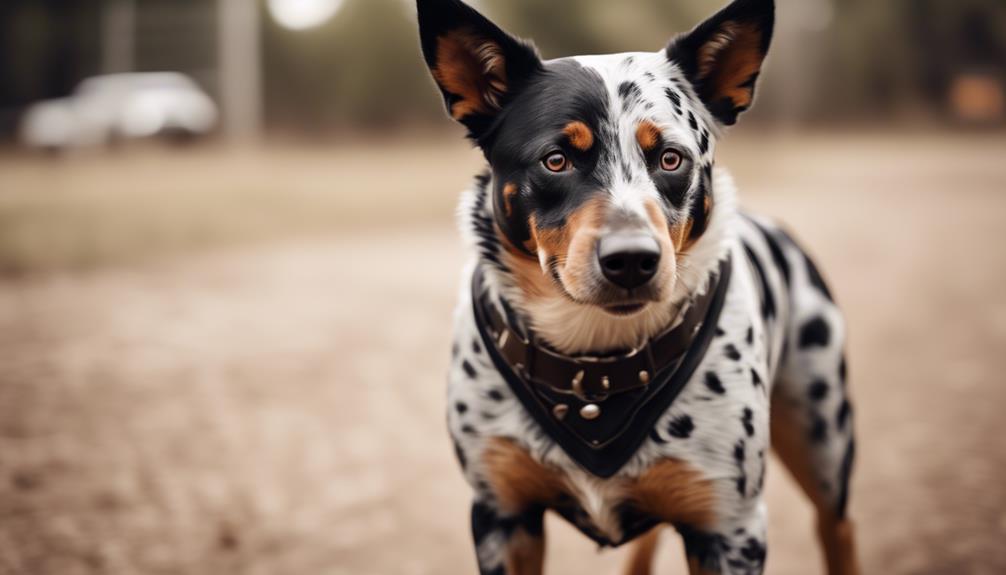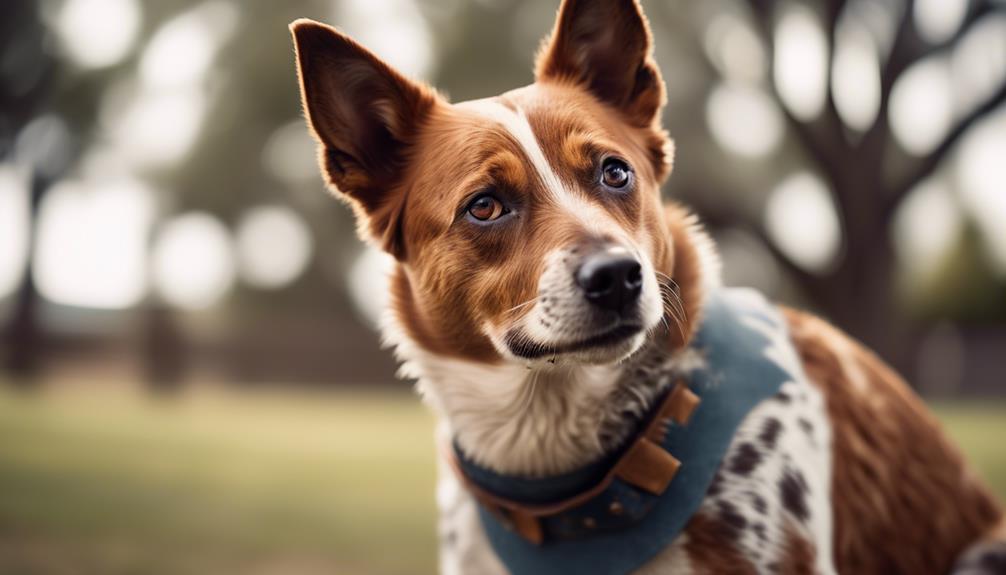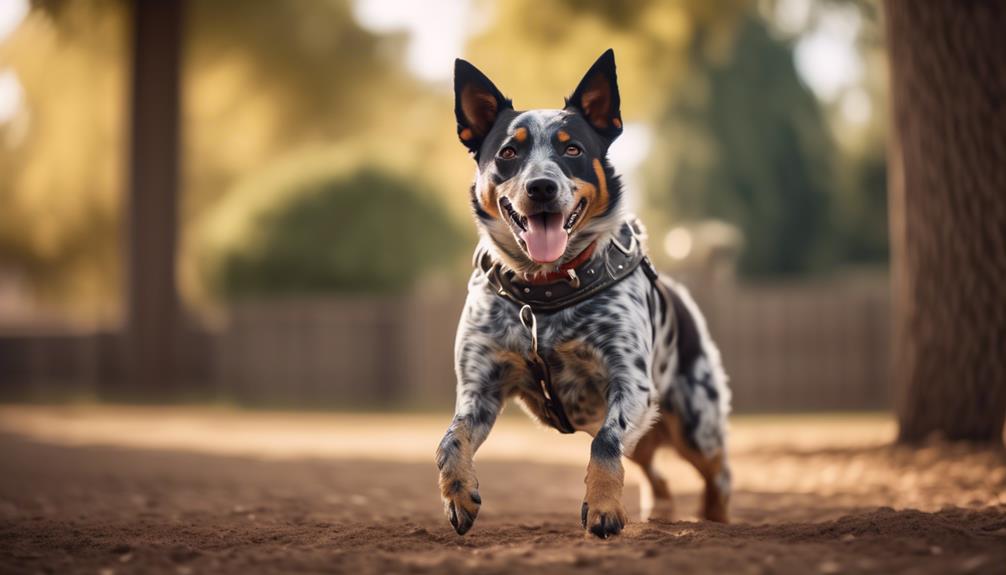
Looking for a dog breed that matches your active lifestyle? While you may have concerns about finding a dog that can keep up with your energy levels, the Texas Heeler may just be the perfect fit.
This hybrid breed, a mix of the Australian Cattle Dog and the Australian Shepherd, is known for its intelligence, energy, and versatility. But there’s more to discover about the Texas Heeler’s unique characteristics and how they can fit into your life.
So, let’s explore further and uncover why this breed might be the ideal companion for you.
Key Takeaways
- The Texas Heeler is a hybrid breed that combines the Australian Cattle Dog and Australian Shepherd breeds.
- They are typically medium-sized dogs with a sturdy build and come in various colors, often with a merle or speckled coat.
- Texas Heelers are intelligent, hardworking, and energetic dogs, making them well-suited for active families or individuals.
- While generally healthy, Texas Heelers may have specific hereditary health concerns, so it’s important to be aware of potential health issues when considering this breed.
Origin and Hybrid Breeding
The origin of the Texas Heeler can be traced back to its unique hybrid breeding of the Australian Cattle Dog and Australian Shepherd breeds. This combination resulted in a dog with exceptional herding abilities and a strong work ethic.
The Texas Heeler inherits the intelligence and agility of the Australian Cattle Dog, known for its fierce loyalty and protective nature. At the same time, it also inherits the versatility and trainability of the Australian Shepherd, making it an excellent working companion.
With its medium-sized, sturdy build and various coat colors, often with a merle or speckled pattern, the Texas Heeler isn’t only a hardworking and intelligent dog, but also a beautiful and distinctive one.
See another Dog breed profile.
Thai Ridgeback Dog Breed
Size and Appearance

When considering the Texas Heeler’s size and appearance, you’ll notice a medium-sized dog with a sturdy build and a range of colors, often displaying a merle or speckled coat pattern. The Texas Heeler typically stands between 17 to 22 inches tall and weighs around 25 to 50 pounds.
They’ve a compact and muscular body, with a strong neck, deep chest, and a straight back. Their head is proportionate to their body, with a slightly rounded skull and medium-sized, almond-shaped eyes. The ears are usually medium-sized and can either be erect or semi-erect.
The Texas Heeler’s coat is weather-resistant and can come in various colors, including blue, red, black, and white, with different combinations and patterns. Overall, their size and appearance make them a charming and attractive breed.
Temperament and Intelligence

After discussing the size and appearance of the Texas Heeler, let’s now explore their temperament and intelligence.
The Texas Heeler is known for their intelligent, hardworking, and energetic nature. They’re loyal and devoted companions, affectionate with their families, and good with children. While they may be wary of strangers, they aren’t aggressive.
In terms of intelligence, they’re highly trainable and eager to please. They excel in various dog sports and activities, such as obedience, agility, and herding. Their intelligence, combined with their energy levels, makes them excellent working dogs and they thrive when given tasks to do.
With proper training and socialization, the Texas Heeler can be a well-rounded and well-behaved companion.
Health and Hereditary Concerns

To ensure the well-being of your Texas Heeler, it’s important to be aware of potential health concerns and hereditary issues.
While the Texas Heeler is generally a healthy breed, there are a few conditions that they may be prone to. These include hip dysplasia, which is the abnormal formation of the hip joint, and progressive retinal atrophy (PRA), a degenerative eye disease that can lead to blindness.
It’s also important to note that the Texas Heeler may inherit certain health conditions from its parent breeds, the Australian Cattle Dog and the Australian Shepherd.
Regular veterinary check-ups, proper nutrition, and regular exercise can help to maintain the overall health of your Texas Heeler.
Adaptability and Apartment Living

Living in an apartment, you want a dog that can easily adapt to the confined space and be considerate of your neighbors. When choosing a dog for apartment living, there are a few important factors to consider:
- Adaptability: Look for a breed that adapts well to apartment living. Texas Heelers are known to be adaptable and can thrive in smaller spaces.
- Energy Level: Small dogs with high energy levels may not be suitable for apartment living. Seek a dog with a lower energy level that can be content with regular exercise indoors.
- Noise Level: Desirable qualities in an apartment dog include being quiet and low-energy. Consider a breed that’s known for being calm indoors and not prone to excessive barking.
- Size Alone is Not Enough: While size is a consideration, it shouldn’t be the sole determinant for apartment suitability. Pay attention to energy levels and space requirements of different breeds to find the best fit for your apartment lifestyle.
Frequently Asked Questions
How Much Exercise Does a Texas Heeler Typically Need?
A Texas Heeler typically needs a moderate amount of exercise. They are an energetic breed, so daily walks, playtime, and mental stimulation are important to keep them happy and healthy.
Are Texas Heelers Good With Cats or Other Small Pets?
Yes, Texas Heelers can be good with cats and other small pets. Proper socialization and training from an early age are important to ensure a harmonious relationship between them.
Do Texas Heelers Have a Strong Prey Drive?
Yes, Texas Heelers have a strong prey drive. They may be prone to chasing after small animals and need proper training and socialization to manage this instinct.
How Well Do Texas Heelers Handle Being Left Alone for Long Periods of Time?
Texas Heelers can struggle when left alone for long periods. They are social dogs that thrive on human companionship. Consider a different breed or arrange for someone to check on your dog if you’ll be away for extended periods.
Are Texas Heelers Prone to Excessive Barking or Howling?
Yes, Texas Heelers can be prone to excessive barking or howling. It’s important to consider their natural instincts and energy levels when choosing this breed. Proper training and socialization can help manage this behavior.
Conclusion
In conclusion, the Texas Heeler is a loyal and hardworking companion that’s adaptable to different living situations. With their intelligence and versatility, they’re easy to train and thrive in environments where they have a job to do.
While they may have specific hereditary health concerns, overall they enjoy good well-being. This breed is affectionate with family members and gets along well with children and other pets.
Consider their tendencies and exercise needs to ensure the Texas Heeler is the right fit for you.




